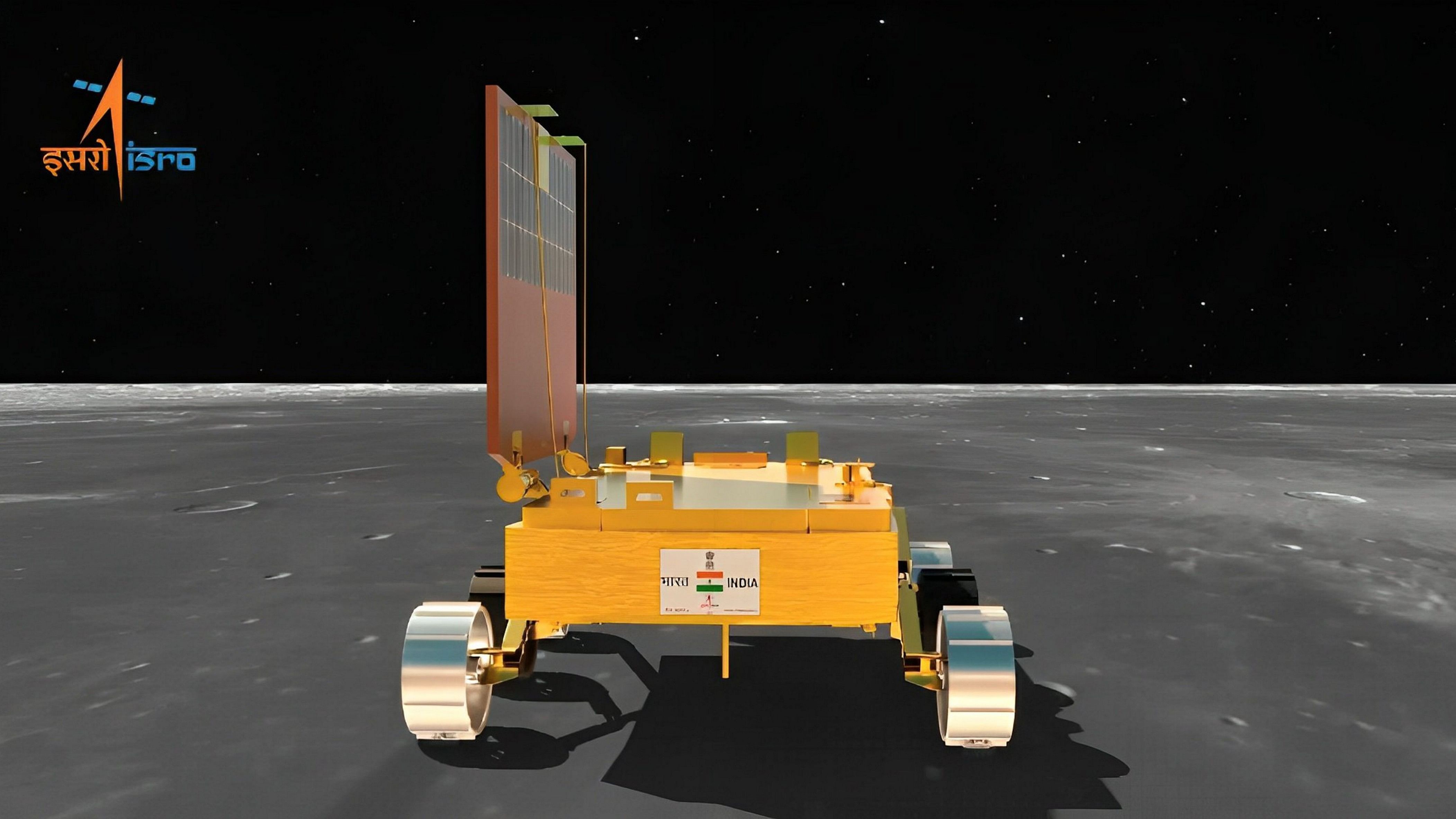
An illustration of Chandrayaan-3's Pragyan rover roaming on the lunar surface.
Credit: PTI Photo
In-situ scientific experiments carried out on the lunar surface by the Chandrayaan-3 rover have led to another confirmation of the presence of Sulphur in the landing region near the moon’s south pole. This is the second such confirmation, in two days, of the presence of sulphur in the region.
The finding could inspire new scientific theories about the sources of Sulphur in the region that explore the possibilities of its origins – intrinsic, volcanic, or meteoritic, the Indian Space Research Organisation (ISRO) said on Thursday.
The Alpha Particle X-ray Spectrometer (APXS) on board the rover, Pragyan, has spotted interesting minor elements including sulphur and major elements like aluminium, silicon, calcium, and iron that were expected to be found on the lunar surface.
The rover, with its two scientific instruments, has been conducting experiments to determine characteristics of soil and rocks in the moon’s south polar region and compare them with features of soil and rocks from other highland regions.
The Chandrayaan-3 lander module touched down near the lunar south pole on August 23.
APXS comes with capabilities to analyse the elemental composition of the surface of planetary bodies with little atmosphere, like the moon.
“It carries radioactive sources that emit alpha particles and X-rays onto the surface sample. The atoms present in the sample, in turn, emit characteristic X-ray lines corresponding to the elements present. By measuring the energies and intensities of these characteristic X-rays, researchers can find the elements present and their abundances,” Isro said.
APXS is developed by the Physical Research Laboratory (PRL), Ahmedabad, with support from the Space Applications Centre, Ahmedabad. Ahead of the landing, PRL Director Prof Anil Bhardwaj told DH that the APXS findings – the first ever from the surface near the lunar south pole – could “transform” the understanding of minute distributional changes in the elemental composition of the region.
ISRO also released a video on Thursday, showing the operation of APXS, as observed from the lander, Vikram, on August 29. In the video, an automated hinge mechanism is seen rotating the 18 cm-tall APXS, aligning the detector head to be about 5 cm near the surface.
On Tuesday, the other instrument on Pragyan – the Laser-Induced Breakdown Spectroscope – confirmed the presence of sulphur in the region, in what were the first-ever in-situ measurements carried out in the region. The “unambiguous” finding is significant since orbiter instruments from earlier missions could not make this confirmation.